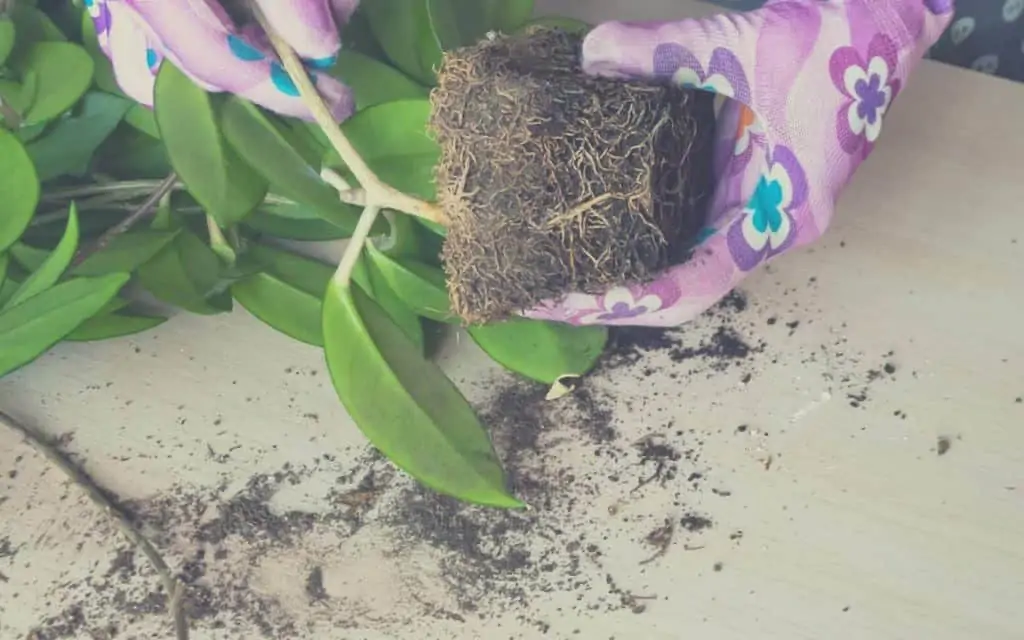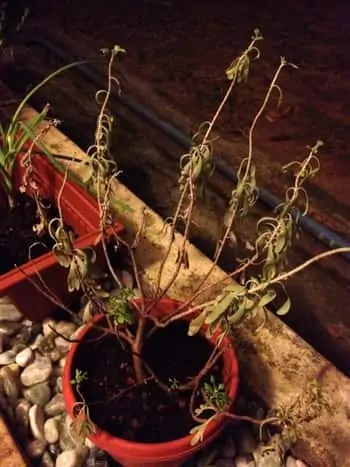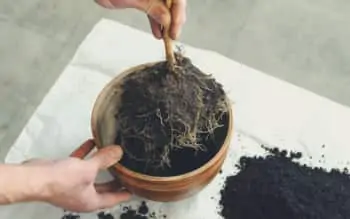Let me guess, your rich greens are turning brown, and you have no idea why? It appears root rot is the problem!
A primary reason why most indoor plants die is root rot which happens because of overwatering and poor drainage.
How to Save a Houseplant With Root Rot in 6 Steps. if you suspect any root rot, you should immediately take these six steps, remove it from the pot, wash the dirt from the plant’s roots, prune the infected roots, and leaves, use some new potting mix and replant it in a new or clean pot.
In case you are wondering, you can still protect your plant. Keep on reading to know more about root rot, its causes, symptoms, and how you can save your houseplant with root rot in just six steps!
Table of Contents
What is Root Rot?

Your indoor plant is dying because deep down, its roots are rotting in fungus. A root rot affects a plant just like a chronic disease would have lethal effects on human beings. Since indoor plants are more prone to their roots rotting, it is better to understand what causes it in the first place:
Overwatering:
Frequent sessions of watering your houseplant can limit the oxygen your plant needs to thrive; it causes the roots to decay and rot.
Fungus in the Soil:
Overwatering brings fungus in plants that kill the plant cells and infect the plant with harmful pathogens. As the water-conducting cells are at most risk in a fungus attack, the result is root rot and the death of your plant.
Poor Drainage:
Plants with fewer holes in their pots are likely to be infected by fungi and eventually die, for the frequent water sitting in the soil, the more it will be harder for the plant to absorb oxygen and nutrients.
Suffocating pots:
Healthy soil will have room for water and oxygen in the roots. If your plant lives in a pot too small for it to breathe properly, then know that it can die of oxygen deprivation due to overwatering.
Root Rot Symptoms

You can have no idea that your plant is suffering from root rot until it is fully dead. However, before the root rot becomes severe, different symptoms appear above the ground. Thus, by paying extra attention to the visible parts of your plant, you can save it from dying.
Leaf Discoloration:
Rich, vibrant green is the color of leaves. Conversely, pale, yellowish, dried-out, and brownish leaves indicate roots rotting inside.
Drooping Stems:
Your plant should have firm, vigorous stems; if you feel like the stems and branches are mushy, it may be because of root rot.
Algae on Soil Surface:
Algae affect your plants just like fungus; it dries the soil, limits the oxygen and nutrient levels your plant needs.
If you notice any of the symptoms mentioned above and take a look at the roots of your plant, you can identify root rot by:
Root Color:
Healthy roots have a crisp color: white, succulent, tan, or any other color, depending on what plant you have. But if the root color is getting dull, or you see the tips of the roots turning brown or black, know that they are rotting.
Root Shape:
Roots hold the plant in place, but if they feel mushy on touching, they suffer from root rot. Also, unhealthy roots are not firm and can even break and fall to the ground with the slightest touch.
Roots Odor:
Healthy soil will have a fresh and clean odor, but if it smells unpleasant like a rotten egg, it has decaying roots.
6 Steps to Save a Houseplant with Root Rot

Follow these steps to save a houseplant with root rot:
Remove the Pot
Gently slide out your houseplant from the pot; if it feels stuck, use a butter knife. If you see any damaged root tips, wash off the excessive soil by running the plant through mild water pressure using your fingers.
Prune the Roots That Have Rot
Once most of the dirt is washed away, and you can better look at the roots, it’s time to prune them. Clean your pruning tools and start by cutting from the tips. Even if some of the roots are not fully damaged, you should remove them entirely as they are dead now.
Select the Right Pot
You should carefully think if the old pot is suitable for the plant as it should be spacious and have enough drainage holes. If not, you should get a new pot that supports healthy plant growth.
Clean Your Pot
If you are using the same old pot, clean it properly to remove any pathogens or fungus in there. You can either use water to wash the pot and let it dry in the sun or scrub it first with a mild bleach mixed with water (1:10 ratio).
If you get a new pot, you should also wash it properly and give it enough sunlight to dry as it kills pathogens.
Replant
Fill the cleaned pot with the right soil type and never use any of the previous soil, not even a bit of it. The fungus and harmful bacteria in the old soil will simply kill your plant once again.
Prune Leaves and Stems
Brownish, Yellowish, even pale-green leaves should be pruned, and the same goes for drooping, mushy stems. If you suspect pruning will cut out most of the leaves, leave at least 1/3 of the slightly affected leaves near the stem; don’t forget to clean your pruning tools in between not to let the other parts of the plant get contaminated with fungus or pathogens.
You should not leave your plant unattended after it is replanted. Instead, give it proper sun and the right amount of water to grow (no overwatering!). Also, it is not recommended to use fertilizer until new leaves appear.
Conclusion
Seeing your plant die is hard, but the good thing is that you can always take measures to protect it. Even before that, you should be sure the plant is saved from overwatering, poor drainage, suffocation, or any pathogens in the roots.
And if you suspect any root rot, you should immediately take steps like washing the spoiled dirt from the plant, pruning affected roots, plants, and leaves, and replanting in a clean pot.
Recent Posts
Have you found yourself wondering, 'why is my bamboo growing so slow?' Despite the fact that bamboo plants are remarkably fast-growing, it can sometimes take months (or even years!) to see any signs...
Miracle-Gro is a huge help when you are trying to get decent yields out of your plants or if you want them to thrive. However, you may have noticed that a single dose of fertilizer does little to...
